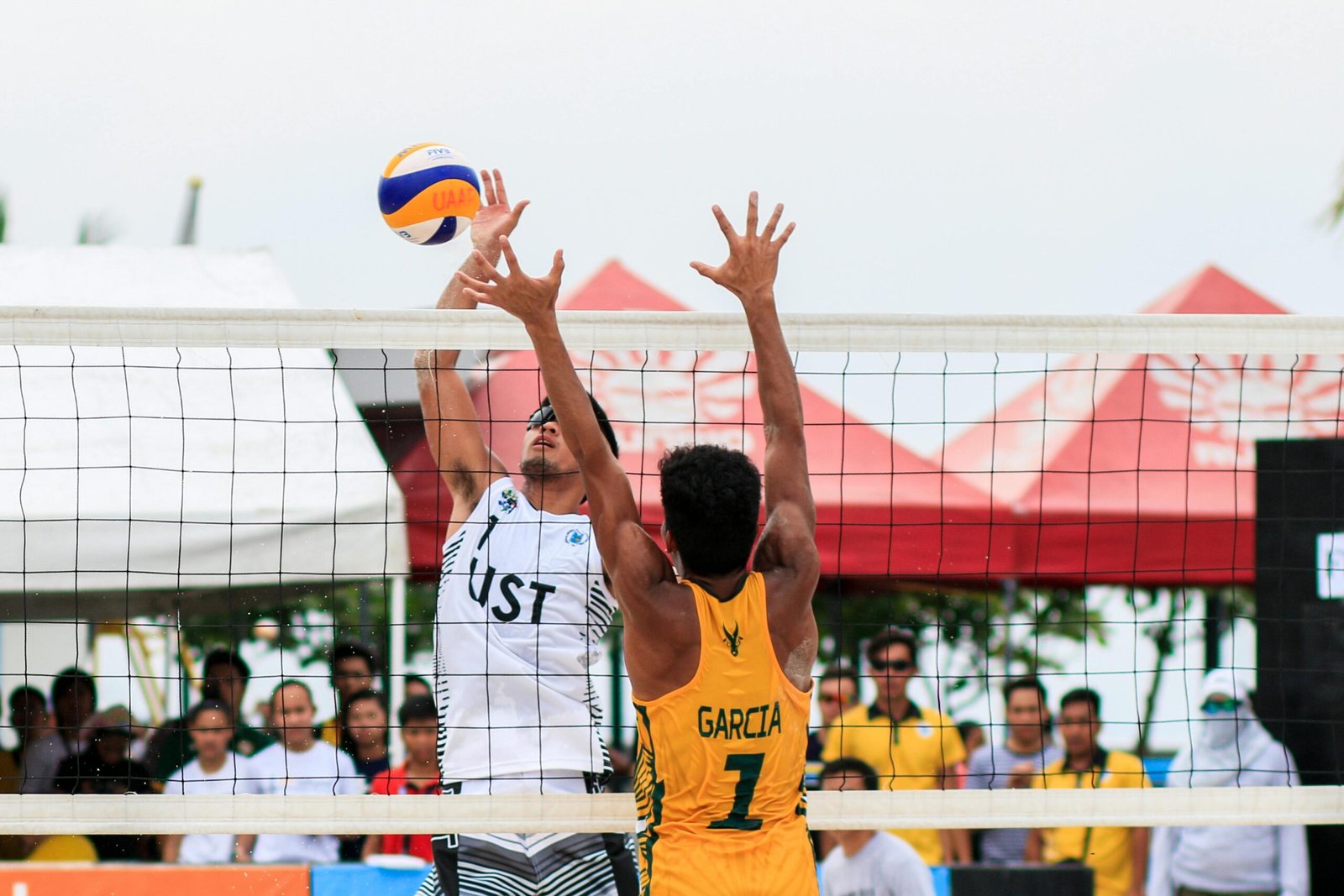Serving is one of the most important skills in volleyball — it’s the only skill that you control entirely without interference from the opponent. A strong serve can score points directly, disrupt the opponent’s attack, and set the tone for your team’s defence.
Whether you’re new to volleyball or an experienced player looking to refine your technique, understanding the different types of serves and when to use them is essential. In this guide, we’ll break down each type of serve, explain how it works, and give practical tips to make yours more effective.
Why Serving is So Important in Volleyball
The serve is the starting point of every rally. A great serve can instantly put your team in control.
Here’s why serving matters so much:
- First opportunity to score – A well-placed or powerful serve can lead to an ace.
- Controls the opponent’s offence – Forcing a poor pass makes it harder for them to set up an effective attack.
- Momentum shift – A big serve can energise your team and intimidate opponents.
- Tactical advantage – You can target weaker passers or exploit gaps in coverage.
While hitting hard is one approach, a smart server also focuses on accuracy, spin, and variation to keep opponents guessing.
The Main Types of Volleyball Serves
Different serves offer different advantages. The right serve for you depends on your skill level, playing style, and the situation in a match. Below are the most common types.
1. Underhand Serve
Best for: Beginners, young players, or as a safe, consistent serve in pressure moments.
The underhand serve is the simplest to learn and is often taught first to new players. It involves swinging the serving arm in an upward motion from underneath the ball.
Technique:
- Hold the ball in your non-dominant hand in front of you.
- Step forward with your opposite foot.
- Swing your dominant arm in a pendulum motion and contact the ball with the heel of your hand.
- Follow through towards your target.
Advantages:
- Easy to control and aim.
- Minimal errors.
- Good for placing the ball into weak zones.
Disadvantages:
- Limited power.
- Easier for opponents to pass.
2. Overhand Serve
Best for: Intermediate to advanced players looking for more speed and variety.
The overhand serve is the standard at higher levels of play. It allows for more power, spin, and tactical variation.
Technique:
- Hold the ball at shoulder height with your non-dominant hand.
- Toss the ball slightly in front of you.
- Step forward and swing your dominant arm over your head.
- Contact the ball with a firm, open hand.
Advantages:
- More power than underhand.
- Can generate topspin or float.
- Allows a wider range of placement.
Disadvantages:
- Requires more coordination.
- Higher error risk for beginners.
3. Float Serve
Best for: Disrupting the opponent’s passing rhythm.
A float serve travels without spin, making its flight path unpredictable. It can suddenly dip, rise, or veer sideways, causing receivers to misjudge it.
Technique:
- Use an overhand motion but strike the ball with a firm wrist and no follow-through spin.
- Contact the centre of the ball with a flat palm.
- Keep your toss consistent and minimal.
Advantages:
- Difficult to read.
- Effective against even skilled passers.
- Can be served short or deep.
Disadvantages:
- Requires precision.
- If not executed well, becomes easy to pass.
4. Topspin Serve
Best for: Aggressive servers who want the ball to drop quickly.
A topspin serve is hit with a forward spin, causing it to dip sharply as it crosses the net. It’s especially effective for forcing opponents into rushed passes.
Technique:
- Toss the ball slightly higher and forward.
- Brush up and over the back of the ball with your hand at contact.
- Snap your wrist to generate spin.
Advantages:
- Steep drop makes it harder to control.
- Can be hit with more power while still staying in.
Disadvantages:
- Requires consistent toss and timing.
- If the spin is weak, it becomes easier to pass.
5. Jump Float Serve
Best for: Players with good timing and control who want an aggressive yet unpredictable serve.
The jump float combines the unpredictable movement of a float serve with the momentum of a jump. This gives the serve more speed and allows the server to contact the ball from a higher point.
Technique:
- Take a short approach (usually 3 steps).
- Toss the ball high and slightly forward.
- Jump and strike the ball with a flat palm, no spin.
- Land behind the baseline.
Advantages:
- Faster than a standing float.
- Difficult to read because of jump height and no spin.
Disadvantages:
- More complex and tiring.
- Timing errors lead to faults.
6. Jump Spin Serve
Best for: Advanced players seeking maximum power.
The jump spin serve is the most aggressive serve in volleyball. It’s essentially a spike from behind the baseline and can be extremely difficult to receive when executed well.
Technique:
- Use a full approach (like spiking) with a high toss.
- Jump explosively and contact the ball at full arm extension.
- Brush over the ball to create topspin.
Advantages:
- High power and speed.
- Topspin brings the ball down quickly.
- Can score direct aces.
Disadvantages:
- High error rate if timing is off.
- Physically demanding.
7. Hybrid Serve
Best for: Keeping opponents guessing.
A hybrid serve changes its style mid-flight. For example, a serve might start with topspin but lose it after crossing the net, becoming a float. This confuses passers and disrupts their read.
Technique:
- Begin with a toss similar to a spin serve.
- Alter your contact angle or wrist action at the last moment.
Advantages:
- Adds surprise factor.
- Can break rhythm of passers.
Disadvantages:
- Difficult to master.
- Risk of inconsistent results.
Choosing the Right Serve for the Situation
An effective server knows when to use each type.
For example:
- Early in the set: Use a safe serve to establish rhythm.
- Against weak passers: Target them with float or short serves.
- When chasing points: Go for an aggressive jump spin.
- In pressure moments: Stick with your most reliable serve.
Mixing up your serve types makes you unpredictable and harder to defend.
Tips to Improve Your Serve
- Master one serve first before adding variations.
- Consistent toss – Most serve errors start with a bad toss.
- Target zones – Practise aiming at specific spots.
- Footwork control – Avoid foot faults by starting far enough back.
- Visualise before serving – Picture the ball landing exactly where you want it.
Common Mistakes to Avoid
- Tossing too high or too low.
- Leaning into the court before contact.
- Focusing only on power and neglecting accuracy.
- Using the same serve every time (makes you predictable).
Final Thoughts
Serving is one of the few moments in volleyball where you have complete control of the ball — use it wisely. Whether you prefer the safety of an underhand serve, the deception of a float serve, or the aggression of a jump spin, the key is consistency, placement, and variety.
By understanding each serve type and practising them regularly, you’ll become a more dangerous server and a valuable asset to your team.



